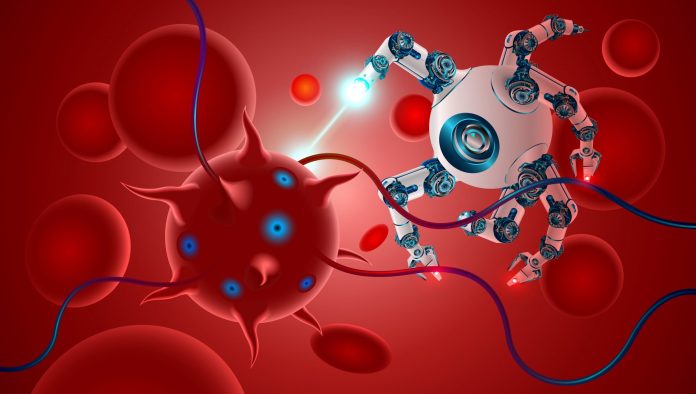Nanorobots – Have you at any point considered what the eventual fate of medication resembles? Disregard massive machines and obtrusive methods — envision a reality where minuscule robots made of DNA speed through your body, fixing issues at a minute level. It seems like sci-fi, isn’t that so? However, it’s genuine, and it’s called DNA-based nanorobotics.
Small Robots with Enormous Targets
All in all, what precisely are these DNA nanorobots? Picture this: they’re little to the point that you’d require a strong magnifying instrument to try and see them. Made altogether out of DNA — the very atom that conveys our hereditary guidelines — these robots are designed to perform explicit errands in the body. Consider them little development laborers, painstakingly intended to convey medication to a particular spot, kill hurtful cells, or even fix harmed tissues.
The coolest part? These nanorobots are programmable. Very much like you’d program a robot in a manufacturing plant to gather vehicles, researchers can “program” DNA nanorobots to play out an errand inside your body. It’s like coding, however on an incomprehensibly little scope.
How Would They Function?
OK, here’s the tomfoolery part. Envision your circulatory system as a clamoring thruway, and these nanorobots as self-driving vehicles. They can venture out to explicit areas, like a growth, and convey their “freight.” That freight may be medication, or even a little sub-atomic instrument to cut away destructive cells.
Despite the fact that they’re infinitesimal, these robots are unbelievably savvy. They’re intended to perceive explicit substance signals, practically like a GPS framework for your body. At the point when they identify their objective — say, a disease cell — they can get a move on. No diversions, no mystery, simply unadulterated accuracy.
Why DNA?
You may be pondering, why use DNA to construct these small robots? DNA resembles nature’s Lego set. It’s staggeringly flexible and can be collapsed into practically any shape. This interaction, called DNA origami (indeed, similar to the paper-collapsing craftsmanship), permits researchers to make complex designs that can do explicit assignments.
Also, DNA is biocompatible, meaning your body doesn’t dismiss it. That is an enormous arrangement in medication. Rather than unfamiliar materials causing undesirable responses, DNA nanorobots mix right in. They unobtrusively take care of their business and afterward separate into innocuous parts when their work is finished.
Why It Makes a difference
This isn’t simply cool — it’s progressive. Envision treating malignant growth without the unforgiving results of chemotherapy. Or on the other hand conveying life-saving medication straightforwardly to a disease site without hurting the encompassing tissues. DNA nanorobots could make the entirety of that conceivable.
Furthermore, it’s not simply medication. These little wonders might one day at some point assist with tidying up ecological poisons, further develop the manner in which we develop food, or even lead to forward leaps in materials science. The conceivable outcomes are just about as tremendous as our minds.
A Fantastic Frontier
DNA-based nanorobots are still in their initial days, yet the potential is stunning. Scientists are continually investigating better approaches to make them more astute, more secure, and more effective. Who can say for sure? In a couple of years, we may be visiting specialists who recommend small robots rather than pills. DNA-based nanorobots blog by Outreinfo

